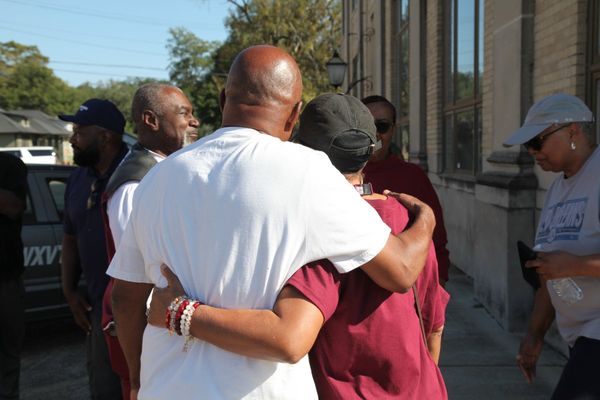It doesn't take long for some fairly pressing questions to start presenting themselves to the listener confronted with Bangs and Works Vol 1. In fact, it takes exactly five minutes and 32 seconds, by which point it has become apparent that track three, Jungle Juke by Tha Pope – a producer and DJ who styles himself as "Chicago's Youngest CelebrityTM" – is going to consist, in its entirety, of a sample from Tight Fit's 1982 novelty version of The Lion Sleeps Tonight, sped up and slowed down, over a weird, disjointed beat. The queries it raises are various. Have I actually put on a compilation of music popular with bloggers and hipsters, apparently a crucial influence on the equally hip genre labelled witch house or drag, and ended up listening to Tight Fit? Does this kind of thing really, as Tha Pope's biography in Bangs and Works sleeve notes claim, have such an overwhelming effect on the opposite sex that "girls all the way to Gary, Indiana, throw their panties at this man"? But chief among them is perhaps the most straightforward of all: what the bloody hell is this about?
Even within the labyrinth world of dance music sub-genres, the saga of the music contained on Bangs and Works is a Byzantine one. Everyone knows about house music's journey from Chicago's gay clubs to Europe, largely because said journey changed the face of pop music for ever. But it appears there was a parallel story, unknown outside of Chicago until recently, in which a version of house music became popular in the ghettos of the city's south and west: faster, more lo-fi, its affiliations to disco and gay culture stripped and replaced with the influence of the 2 Live Crew's sexually explicit Miami hip-hop, called either booty or ghetto house. It begat first a style of competitive dancing, called juking, then a Detroit-based variant called ghettotech, which sounds almost identical but has its own style of dance called jit, then a variant called either footwork or – I hope you're keeping up here – juke.
To confuse matters further, the dancing now no longer appears to be called juking but footwork, or footwerk, or indeed footwurk. Somewhere along the way, the music's tempo got faster and its sound stripped down even further. House music's four-to-the-floor thud was removed in favour of stuttering beats so scattered it's occasionally hard to work out what the rhythm actually is, a state of affairs further muddied by immense basslines that appear, then disappear, then reappear again, apparently at random, and by the looped bursts of lo-fi sampled, distorted vocals. Usually, the producers isolate a line from an R&B diva, but occasionally they venture further afield: RP Boo's Eraser offers the listener the fairly improbable image of a dance contest in a Chicago ghetto soundtracked by a burst of Paul McCartney and Wings.
While ghettotech has had some degree of crossover success, juke has remained an entirely local phenomenon. At least one of the producer/DJs featured on Bangs and Works, DJ Roc, has never actually performed outside of Chicago, a state of affairs that presumably might change thanks to the interest of British electronic auteur Mike Paradinas, aka μ-Ziq. You can see why footwork grabbed his attention. There's something fascinating about music intended to be entirely utilitarian that ends up in the realms of avant-garde abstraction by default rather than by design. Furthermore, its development intriguingly mirrors the path of British urban music from garage via grime to dubstep: one of the year's biggest dubstep hits, Addison Groove's Footcrab, appears to be a nod to juke.
Before Paradinas and his Planet Mu label got involved, the scene's primary means of communication with the outside world was via YouTube. Search under footwork and you'll find dozens of videos of battling crews. Everything from the neck down is hyperkinetic joy, but the expressions on the dancers' faces as they front up to their rivals frequently look pretty menacing, as if they might stop dancing and start thumping each other any minute. They don't, but stripped of the visuals, that's how footwork sounds: menacing and bleak and occasionally pugnacious. There's certainly a hypnotic, slightly druggy quality to its minimalism, but none of house or disco's sense of escapism: "It's not right, it's not right," repeats the vocal sample on one track, over and over again. Everything here sounds reflective of a grim urban environment, everything sounds as though it was recorded in a dank, strip-lit basement. The mind boggles a bit at the disconnect between the eeriness of the music and its intent to make people dance. But then boggling the mind seems rather to be the point of this compilation, a snapshot of a world most people outside Chicago never knew existed, thrillingly strange and alien.







